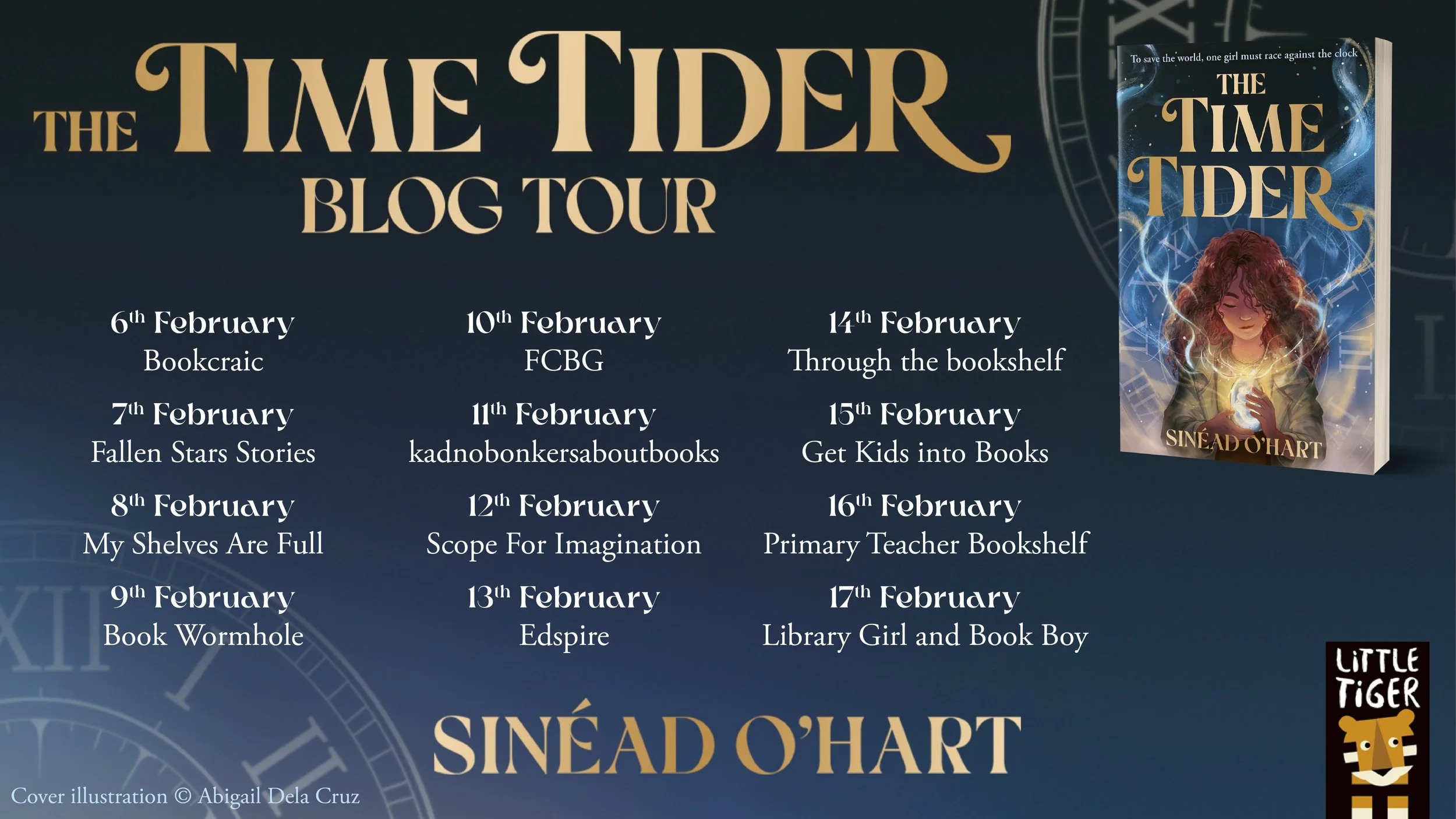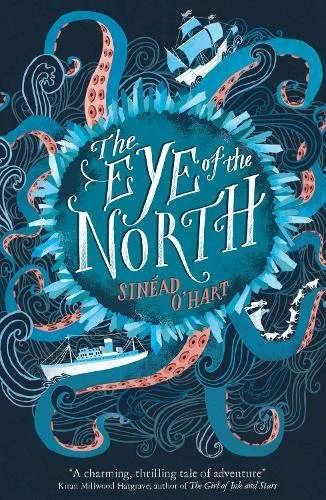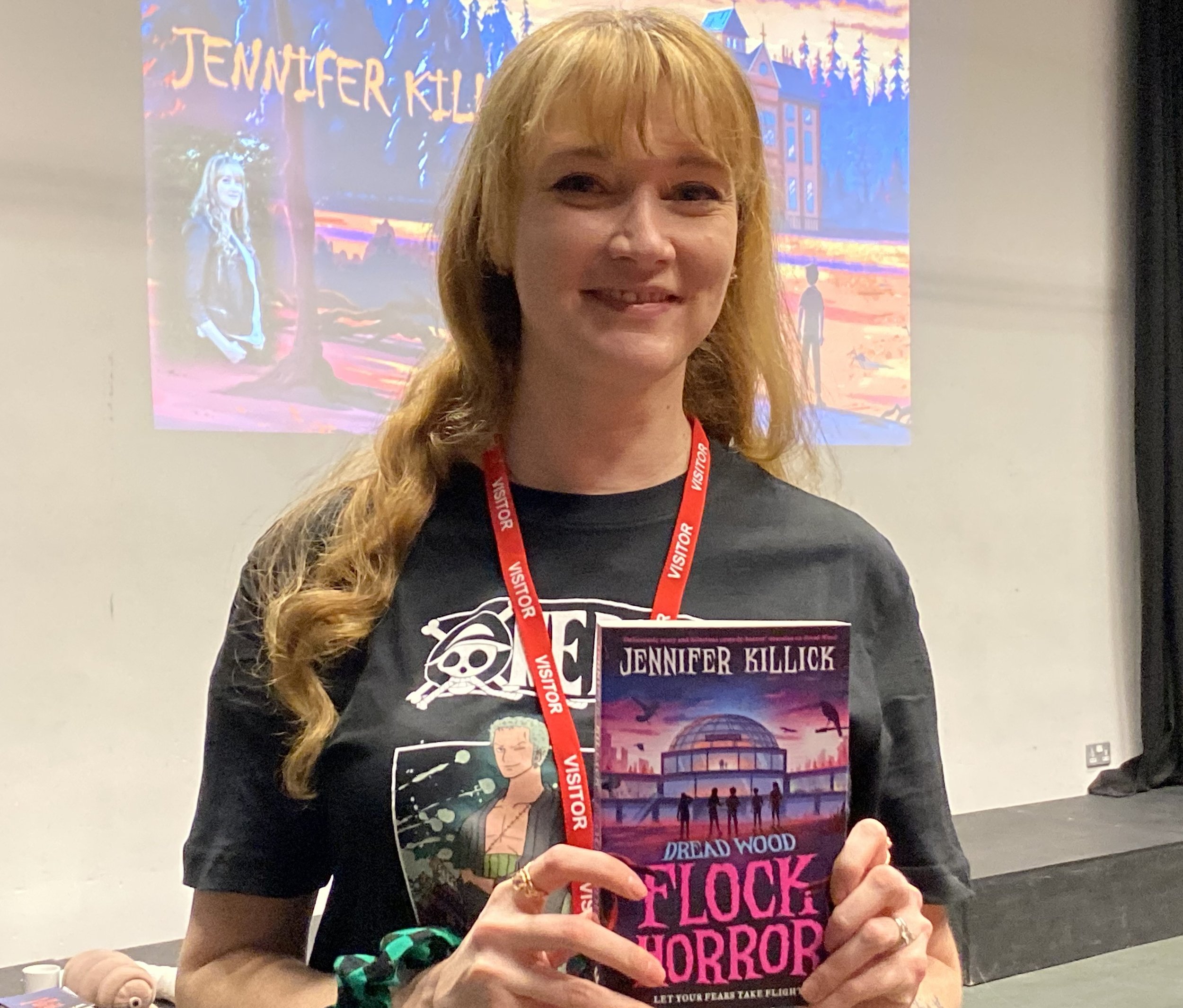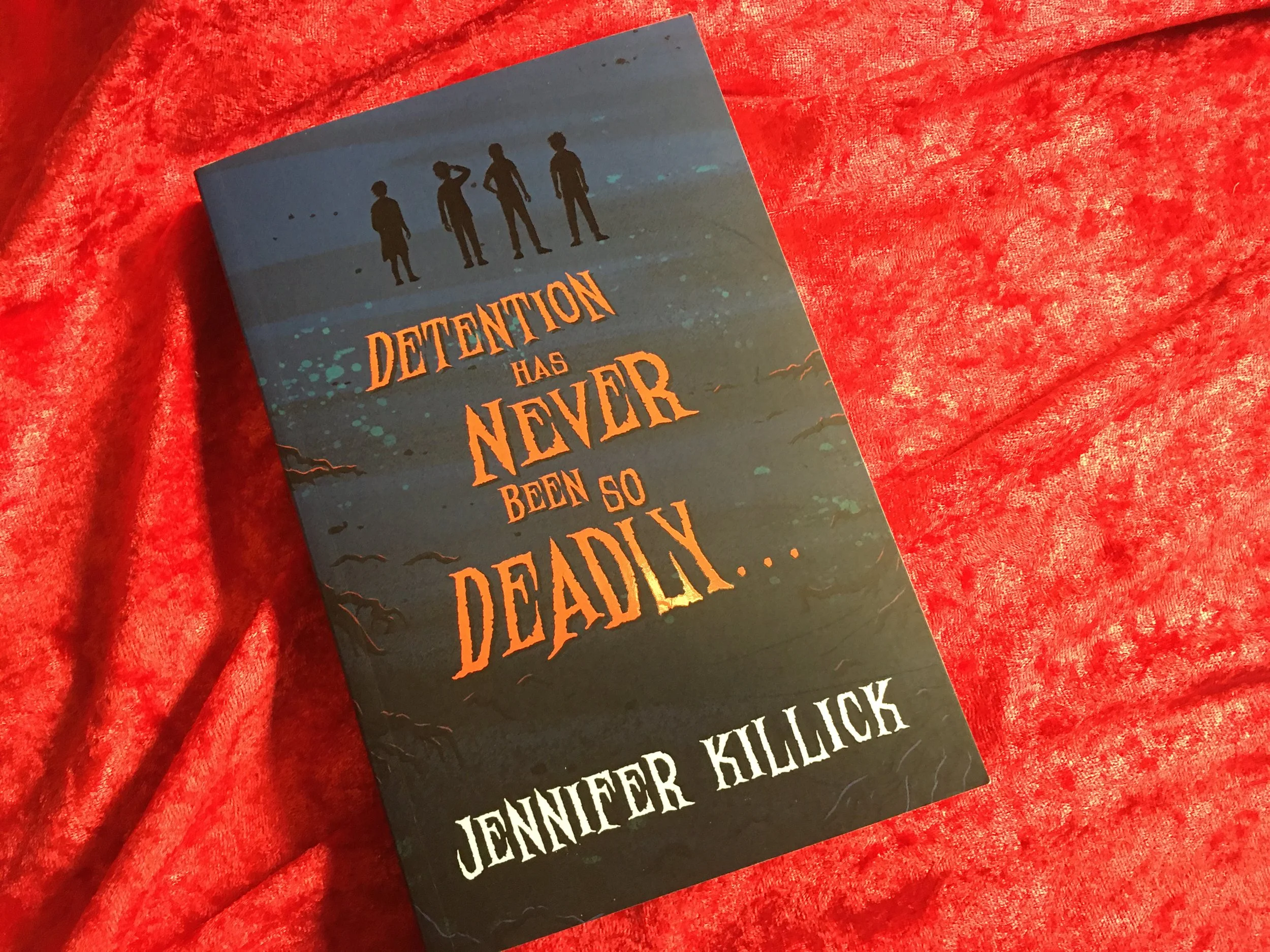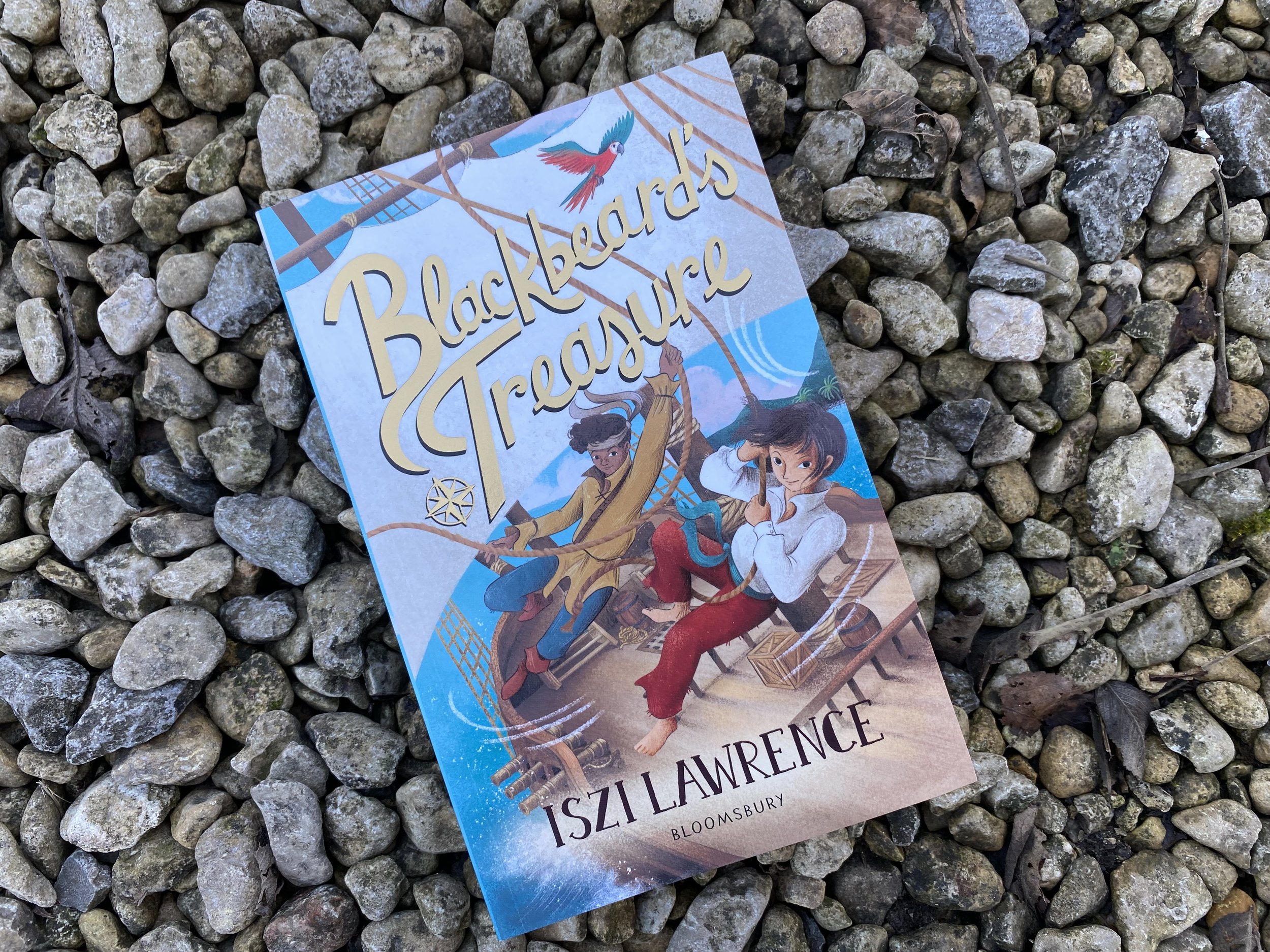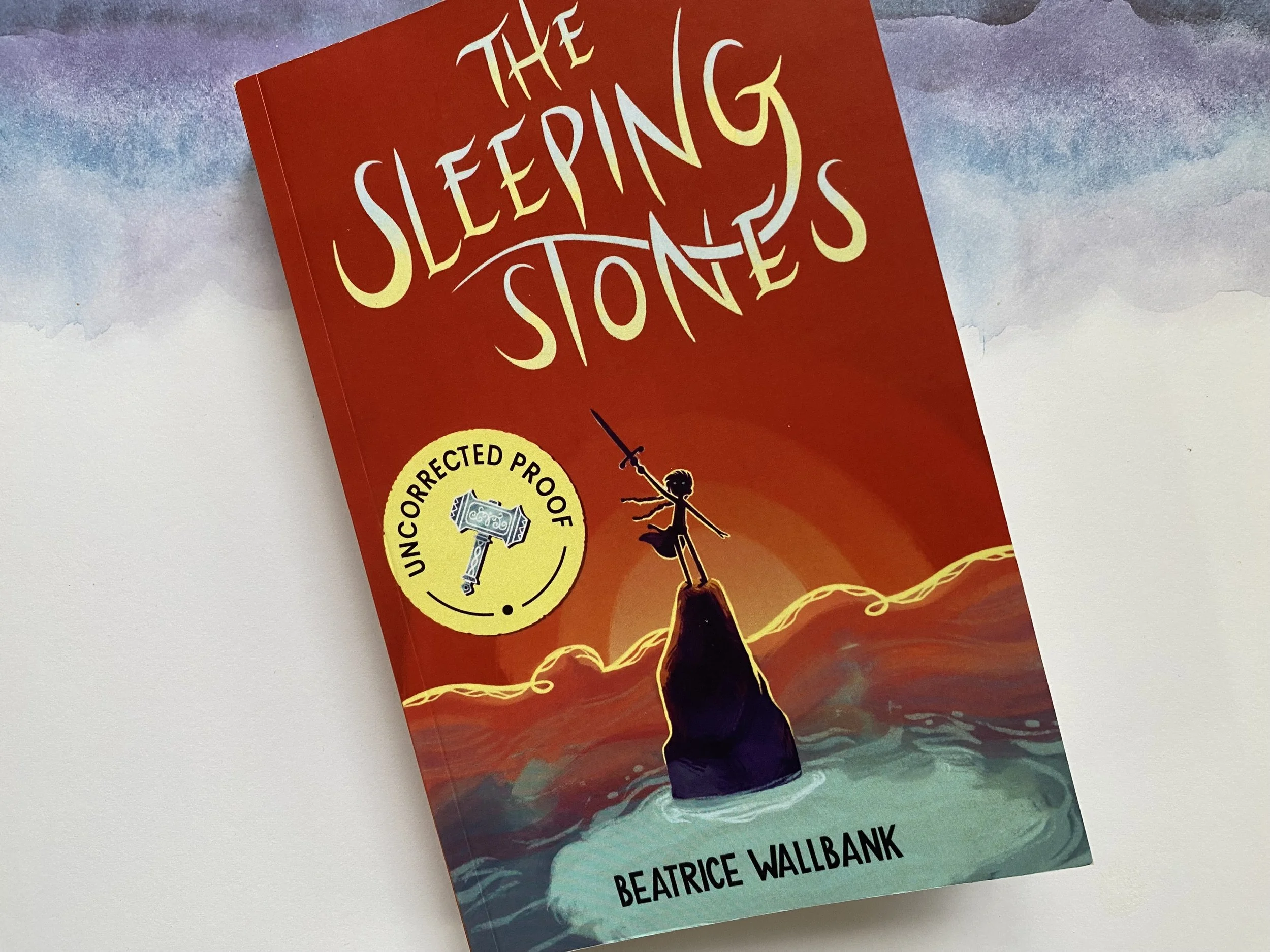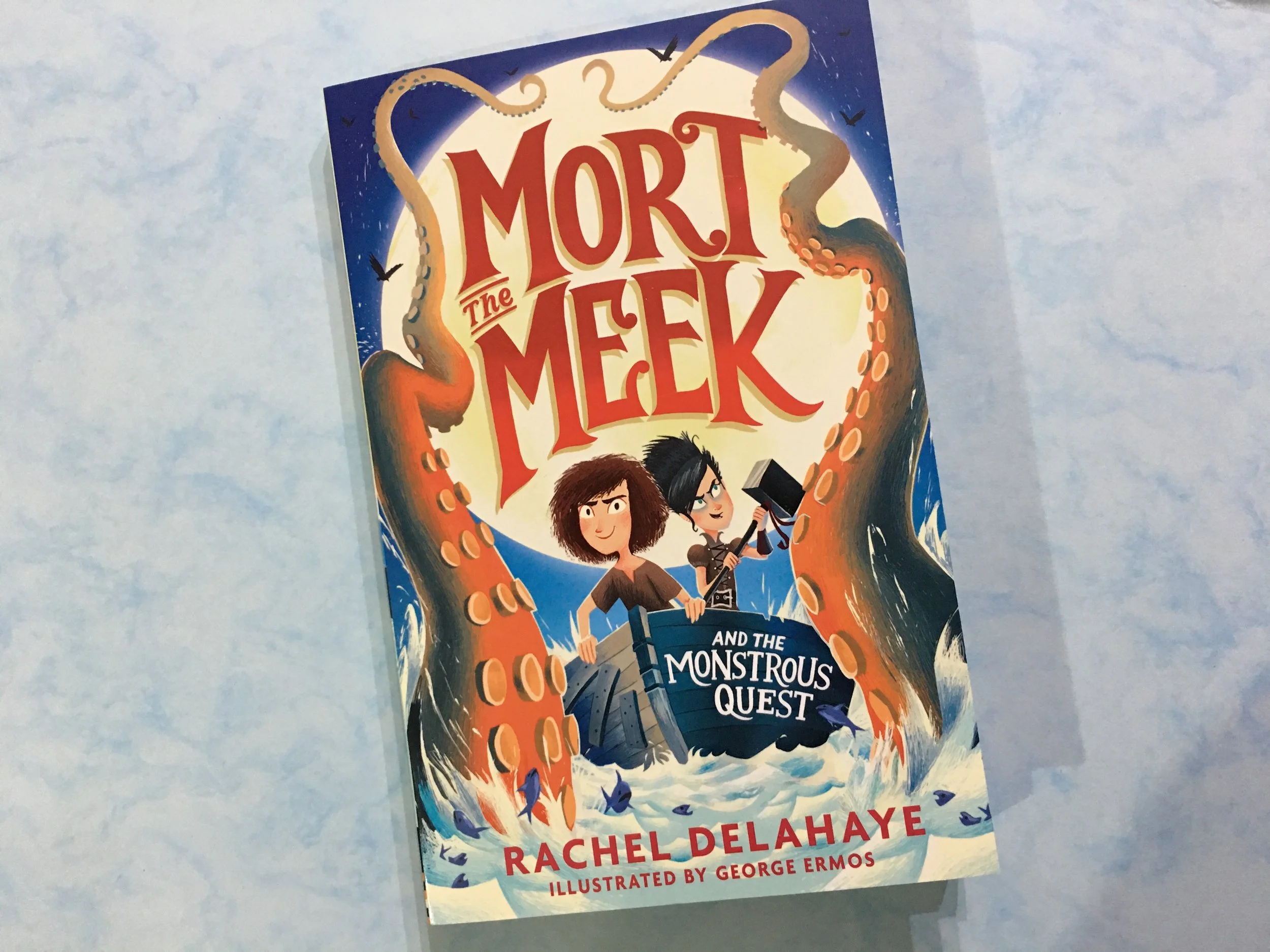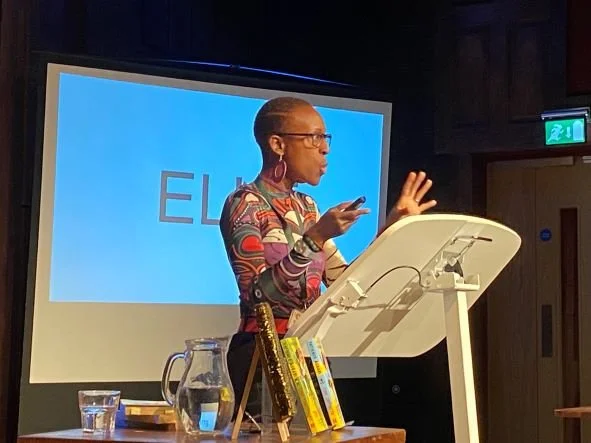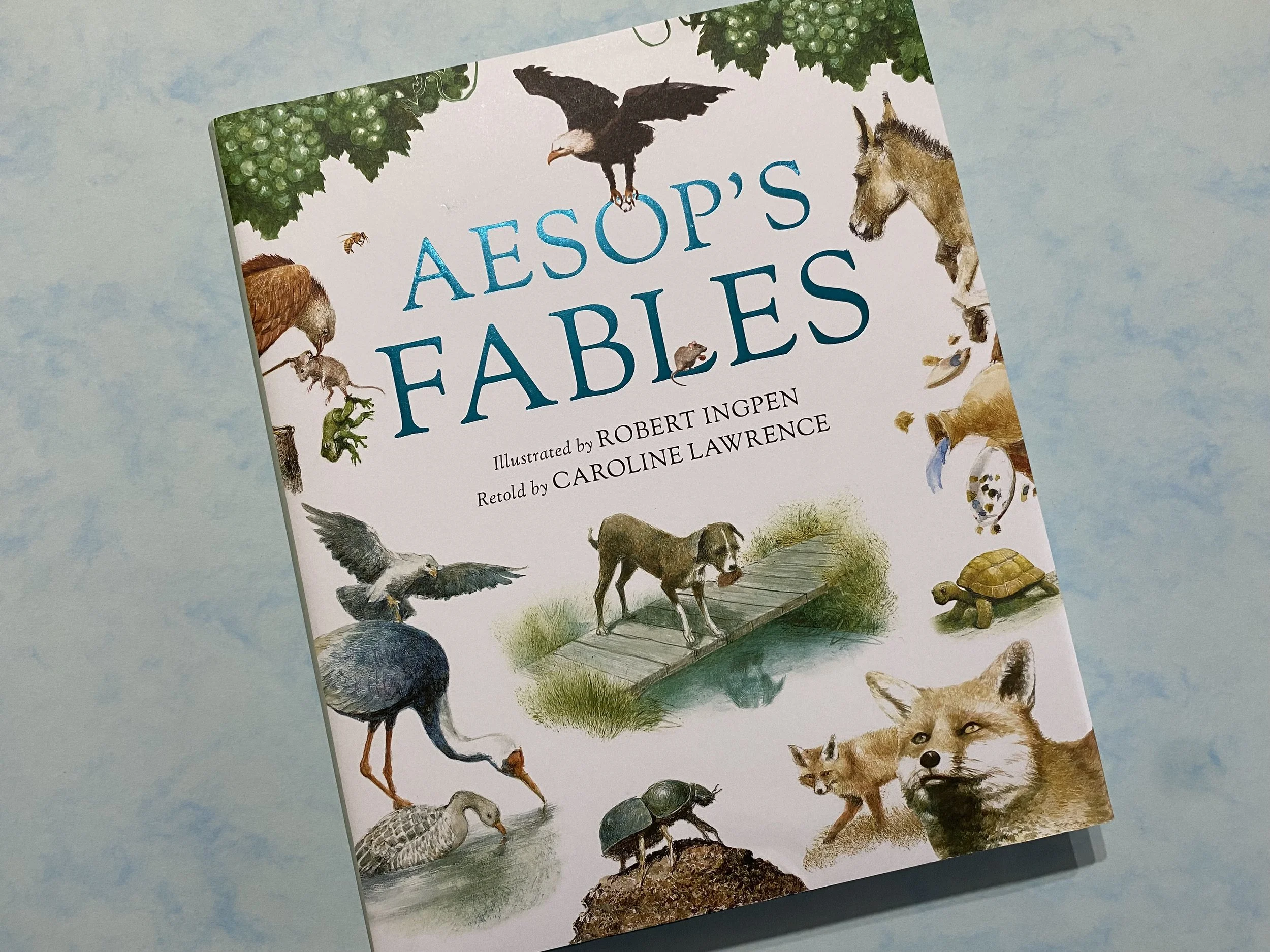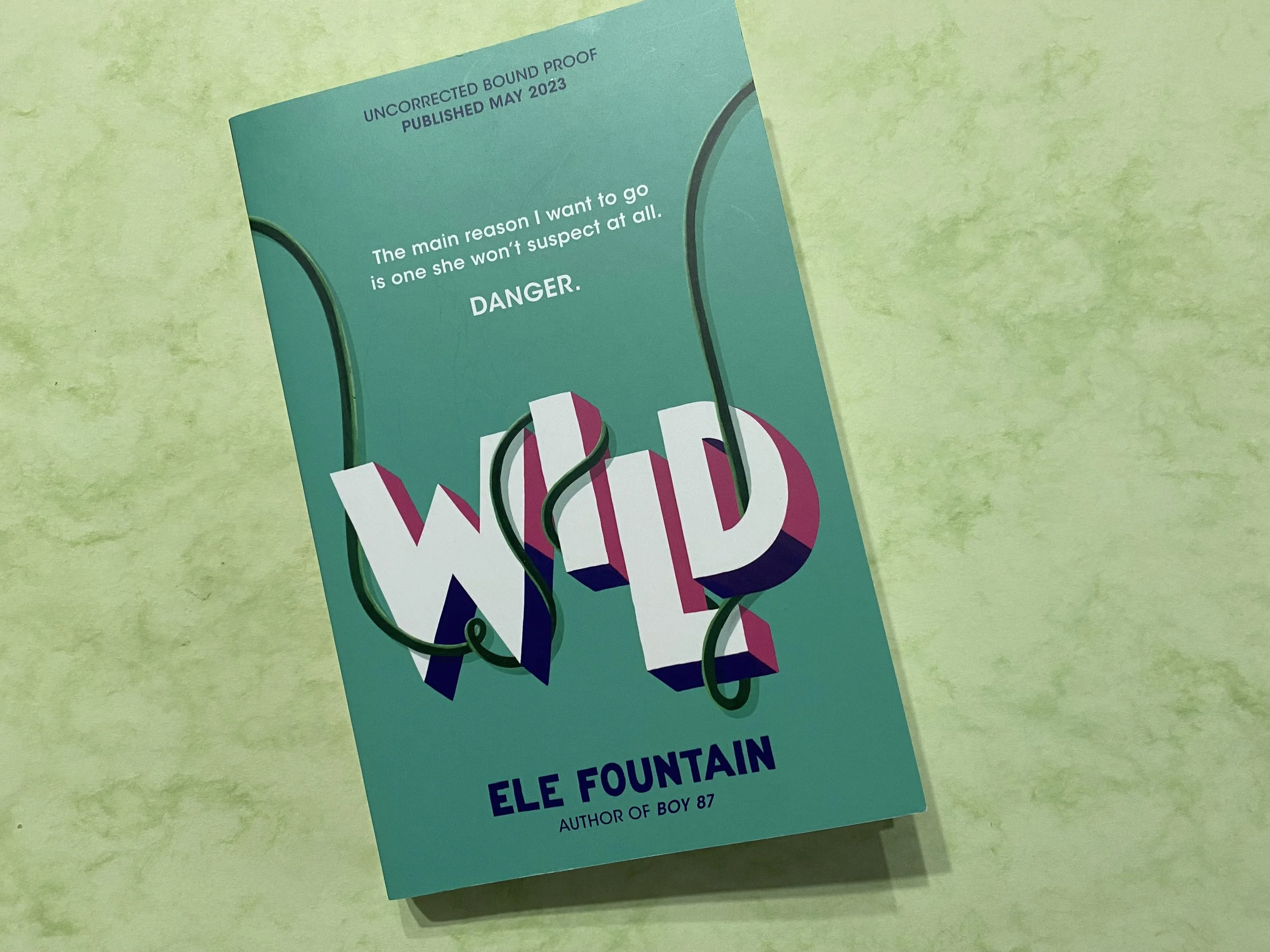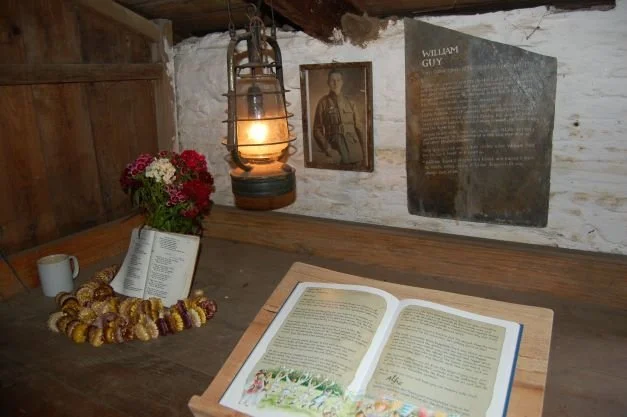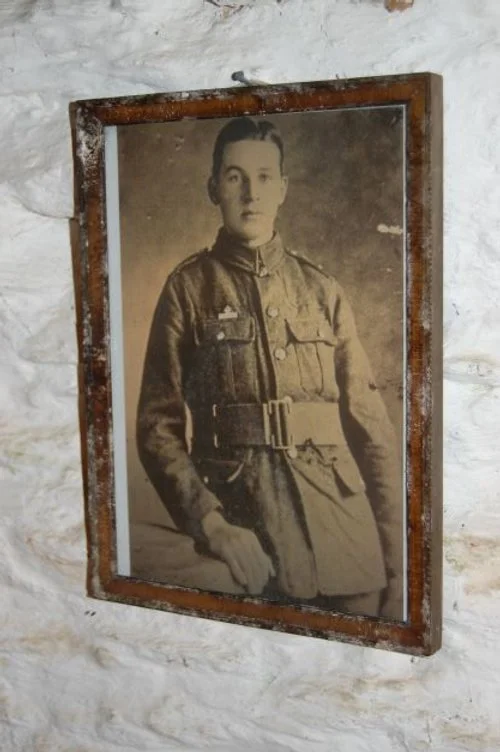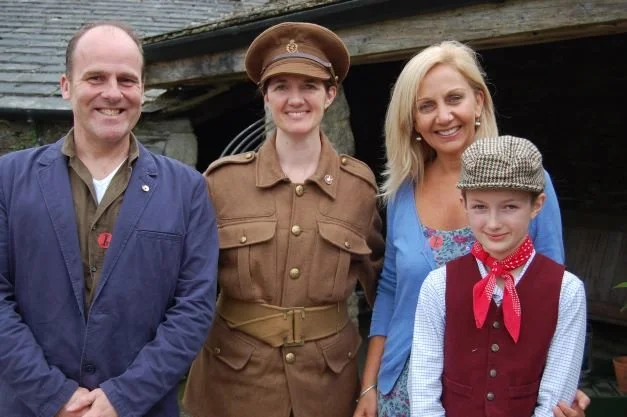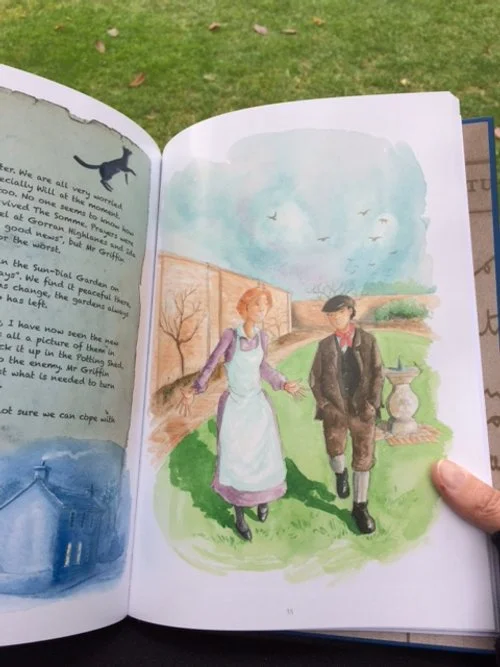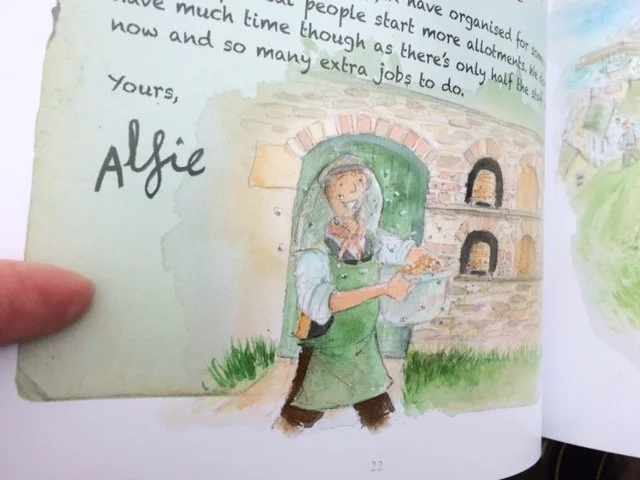
Reviews
There are so many incredible books available at the moment that it is impossible to read them all, no matter how hard I try! Here are my thoughts about some of the books I have read and how I think they could be used in school as well as Q and A sessions with authors and illustrators.
Blog Tour: The Time Tider
I am beyond delighted to be taking part in the Blog Tour for ‘The Time Tider’ by Sinead O’Hart. I have loved each of Sinead’s books so far for very different reasons, but this latest one really is something special. It offers mystery, adventure and peril whilst challenging the reader to wonder what they would do if they were in Mara’s shoes. Completely compelling, it is an irresistible story- one to return to again and again!
For this stop on the Blog Tour, Sinead shares this fascinating piece about the History of Clocks and Timekeeping.
One of the most enjoyable parts about being an author is the research you sometimes get to do when you’re writing a book. Some books require more background work than others – some require none at all! – and others require loads. My new book, The Time Tider, was somewhere in the middle. It’s a book that’s sort-of about time travel, but which is more about asking questions around the morality of power and who gets to be in charge, and what to do when the people in charge get corrupted and start misusing the power and responsibility that was placed on their shoulders. It’s a book about loss and grief, too, and the importance of making the most of every second we have with our loved ones. And, of course, it’s a cracking adventure with lots of thrills and twists, and two of my favourite characters, Mara and Jan, a girl who lives on the road and a boy with secrets of his own, who have to work together to save not only themselves, but the fabric of Time itself.
In order to write The Time Tider I did some research into how human beings have thought about time for as long as we have historical records, and I learned about clocks and timekeeping and how time – and how it’s measured – can tell us loads about society and culture and structures of power. Of course, when you’re dealing with time as a concept in a book, you run afoul of pesky things like physics and relativity and time dilation and quarks and gravity and black holes… and sometimes, you can become bogged down in the fact that people much cleverer than yourself have spent entire careers trying to understand the way time works – and they still don’t have all the answers. I also read about the physics behind time (turning my brain into a pretzel in the process), but I was more interested in the history of how we’ve measured time – and mostly, what I learned was that time is a very complicated business, and I honestly have no clue how any of it keeps ticking along.
The first means of measuring time, in all likelihood, involved using shadows – because, of course, an object’s shadow changes position during the course of the day, as the sun moves through the sky. People have long noticed this, and used it as far back as the 3rd century BCE (Before the Christian Era – so, over two thousand years ago) to calculate the circumference of the Earth. This was done by a brilliant Greek mathematician named Eratosthenes. He used two gnomons (which are tall objects designed to cast a shadow, and can be used to tell the time as part of a sundial or shadow clock) placed in two different cities, and measured the difference in the angle of the shadows cast by the gnomons at midday. From that, and using the distance between the cities, he was able to work out not only how big the Earth is, but also its axial tilt (the angle of the Earth). At around the same time, during the First Punic War, the Romans took a sundial from Sicily and put it on display in Rome as the first public clock. The playwright Plautus complained about how the human body used to be the best clock – by which he meant he could tell when it was lunchtime by the grumbling of his tummy – and now people were using technology to tell time instead! This complaint has been made at several points in history (and it’s one of the inspirations behind The Time Tider itself).
In Athens, in Greece, there’s an amazing place called the Tower of the Winds, which might date from around the 2nd century BCE. It has shadow clocks (sundials), a wind vane, and a water clock – so it’s like the world’s first meteorological station. Water clocks were a way to measure time through the precise dripping of water through a carefully bored hole in one vessel, which fell into a second, lower, vessel marked with the hours. These clocks were made with great skill, so that the water filled at a predictable and accurate rate during the day, and that it took exactly the same length of time to fill each hour. (Well - more or less.) They were known as ‘klepsidras’, which means ‘water stealer’. In medieval China, we see candle clocks beginning to appear – these were candles which burned at a steady rate, reducing their height each hour so that a person could tell by looking at it what time it was. These sorts of clocks became widespread and were used in Anglo-Saxon England by King Alfred the Great, as well as by the great Mesopotamian inventor Ismail Al-Jazari (d.1206), who made a clock that played music every hour! In later medieval China there were fire clocks which worked by burning a stick of incense, and as the hours passed the burning stick would drop metal balls into a shallow plate placed beneath the clock. The clattering of the balls would alert people to the passing of the hours. Some of these clocks worked using fragrance, so that each hour had its own particular scent; as the incense burned, and the scent changed, the user would know that time had passed. Hourglasses – where sand flows at a known rate through a glass vessel, which is housed inside a wooden frame – were also widely used, but nobody is really sure where they were first invented. Certainly, they’ve been around since at least the eleventh century – a thousand years ago.
From the medieval period, about the thirteenth century, mechanical clocks begin to be invented. Bell towers (which were already ringing out the hours through someone ringing a physical bell) began to be mechanized, and the earliest clock tower with a face and hands comes from the 1380s, in Venice. There was one in Salisbury, in England, from around the same time. And here’s where our friend Plautus would have had a lot to complain about: it’s from this time that people begin to think about time in a different way to before, where time becomes something imposed upon people, and clocks begin to force a sort of order or structure on people’s days and lives, disrupting their personal time. The widespread appearance of public clock towers made people feel they had to be eating lunch when the clock struck one (rather than when they were hungry) and that they had to be at church when the clock struck ten, or that they had to be asleep when the clock struck eight. The phrase ‘time is money’ dates from around 1719, when ideas about time and productivity and work start to get intertwined – time was no longer something personal and private, but now your time belonged to your employer. It was also something precious, given by God, something you could waste (which was sinful), and in the late seventeenth century a writer named Richard Baxter wrote about wasting time as being the same thing as robbing from God himself.
In the nineteenth century, we begin to see time and time-zones becoming established and regularized, and one of the main reasons for this was so that accurate train timetables could be drawn up. Prior to this, each town and village would have had its own time! So, GMT (Greenwich Mean Time, which we still use today, and which regularizes what time it is in Britain, Ireland, and lots of other countries) became the primary way in which we map time-zones around the world. Nowadays, we use quartz watches (quartz vibrates at a set rate, and can be successfully used to calibrate clocks) or atomic clocks (which work similarly – using atoms which vibrate at a set rate to power the most accurate clocks humanity has yet invented) to measure time on land, on sea, and even in space – but sometimes I wonder, even now, do we really understand how time works? Maybe we never will!
Many thanks to Sinead for joining me on the Bookshelf today and sharing this piece. I cannot recommend ‘The Time Tider’ highly enough and know that it is a book which teachers will enjoy introducing their children to- it would work brilliantly as a Guided Reading text! Thanks to Little Tiger for inviting me to be part of this tour- and make sure you check out some of the previous posts as well as the three remaining days ahead.
The Time Tider Sinead O’Hart
Little Tiger ISBN: 978-1788953306
You can read my review of ‘The Eye of the North’ here.
The Rescue of Ravenswood
Ravenswood has been home to Bea and Raffy for as long as they can remember. To them, it’s perfect so when faced with the idea it could be sold, the children are determined to save it no matter what.
Natasha Farrant crafts the most beautiful stories which are full of heart and hope and in ‘The Rescue of Ravenswood’, she has captured the essence of the love of home and belonging, the topsy-turviness of family- however that is formed- and how special places can be.
Bold and brave, Bea is in her element at Ravenswood. However, she struggles with feelings of rejection by her parents, feeling she can never be the person they want her to be. Although not her ‘real’ sibling, Raffy and she are incredibly close, enjoying a special bond and balancing each other’s personalities. When Noa arrives, the dynamic between them changes and what was supposed to be their perfect summer seems threatened. Each character is full of personality and easy to engage and empathise with.
Ravenswood is special to the children in the way in which many people will be able to relate to the places in their lives, places which are worth fighting for and worth preserving for future generations. As the children bring everyone together to save their most precious place, certain truths come to light and ‘everything changes, but everything stays the same’.
There is so much to enjoy about this story. Natasha Farrant always offers something special and ‘The Rescue of Ravenswood’ is a real treasure.
The Rescue of Ravenswood Natasha Farrant
Faber ISBN: 978-0571348787
Originally reviewed for Reading Zone.
You can read my review of ‘Voyage of the Sparrowhawk’ here and ‘The Children of Castle Rock’ here.
Press Start!
Sunny’s favourite video game is ‘Super Rabbit Boy’. In Animal Town, the characters live happily, singing and dancing the days away. However, when King Viking comes up with his No-Fun Plan and kidnaps Singing Dog, it is up to Super Rabbit Boy to rescue him. Can Sunny help him to complete his quest?
‘Game On, Super Rabbit Boy!’ is a first chapter book with brightly coloured illustrations, designed to look like those from a computer game and is sure to have young gamers hooked! Told through a mixture of sections of text and comic book like scenes with speech bubbles, the layout offers reading in small, achievable chunks whilst the illustrations do much to keep the plot moving. The sentence structures used are also relatively simple and although the action moves between the game, including a flashback, and Sunny playing it, the story line is easy to follow.
The story also shows the importance of perseverance as Sunny loses life after life until, with no lives left, he is finally victorious. The use of the present tense makes the action feel immediate and ultimately, happiness returns to Animal Town.
The fun continues in ‘Super Rabbit Boy Powers up!’ as, once again, Super Rabbit Boy sets off on a quest to save the day. As the adventure progresses, Sunny starts to find the game tricky and, although he initially rejected playing with his sister, saying the game is for one person, gradually his whole family becomes involved in playing with his sister, Rue, being the one to ‘stop and think’, solving the problem which the others were not able to. From then on, Sunny sees the value of teamwork and is happy to include his sister in his gaming.
I am not a ‘gamer’ in any way, shape or form, but have lived the experience through parenting. It seems to me that the technology used is older- of the Game Cube/ Game Boy era- and I wonder whether this has been chosen deliberately as gaming devices seem to change so quickly, but that these ‘retro’ devices seem to have a constant appeal- or perhaps I’m overthinking things! These stories are sure to grab the attention of younger readers who enjoy computer games, thrusting them into the challenges of Super Rabbit Boy’s quest and offering a little life lesson along the way! Great fun!
Press Start! Game On Super Rabbit Boy!
Thomas Flintham
Nosy Crow ISBN: 978-1839949180
Press Start! Super Rabbit Boy Powers Up!
Thomas Flintham
Nosy Crow ISBN: 978-1839949227
Scary monsters…and Jennifer Killick
Yesterday, I joined an excited audience at Sidcot School to hear Jennifer Killick speak about her books. Although pathetic by nature and very easily scared, I love her ‘Crater Lake’ and ‘Dread Wood’ stories and know that children do too, finding them just scary enough and relating well to the characters in them.
For someone with such a deliciously twisted and wicked imagination, Jennifer is a warm, lovely person, full of enthusiasm and energy. Her talk was the perfect mixture of interaction, inspiration and fun which keeps the audience engaged. She introduced everyone to ‘Geek, Robot, Overlord’, a game from ‘Crater Lake’ based on ‘Rock, Paper, Scissors’, and I could see children playing this in the signing queue at the end of the event.
Jennifer treated us to a reading from ‘Dread Wood’ and even though I knew what was coming (having read the book!), I still jumped at the end! As she read, there was not a sound from the audience who were completely engrossed by the story. All too soon, the event was over and Jennifer was faced with a huge signing queue! Although book three of the ‘Dread Wood’ series is not yet released, Alistair from Books on the Hill in Clevedon had worked his magic once more and ‘Flock Horror’ was available (it’s so good!).
Thanks to Andrea and Bev at Sidcot for letting me join the event. ‘Flock Horror’ (Farshore ISBN: 978-0008538545) is out on the 2nd March- don’t miss it!
Blog Tour: Vita and the Gladiator
I love historical fiction and have been a great admirer of Ally Sherrick’s writing since reading her debut, ‘Black Powder’, a fabulous adventure set at the time of the Gunpowder Plot. Today, I am delighted to be taking part in the Blog Tour for her new book, ‘Vita and the Gladiator’, a thrilling adventure set in Roman London.
Daughter of a high-born Roman, Vita lives a life of luxury and privilege. She longs to write plays like those she sneaks off to watch at the Forum, but is destined to marry the man chosen for her. When her father is murdered, her life changes completely. Taken for a slave, Vita ends up working at the gladiators’ arena, sharing a cell with female gladiator, Brea and her wolf. Both are seeking justice from a common enemy and form an unlikely pact as they work together to defeat him.
Ally Sherrick writes brilliant historical fiction, balancing factual details with exciting, immersive adventure. Set in Roman London in 125 CE, ‘Vita and the Gladiators’ also offers a gripping murder mystery to solve as Vita pieces together the events surrounding her father’s death.
The story is rich in detail, vividly contrasting Vita’s former life as a magistrate’s daughter with being a slave working with the gladiators. Appropriate vocabulary and terminology is used in context, enriching the reader’s experience and understanding of the period. The scenes of the gladiators training and fighting are well developed, emphasising the blood-thirsty nature of these events and their cruelty as well as the fascination they held for audiences. The story also explores the treatment the army meted out to those they conquered.
‘Vita’ would work extremely well as a read aloud or as a key text to inspire work. Not only is the story bursting with details about the period, it offers much to discuss and many opportunities for writing in role, research, drama and role play. Above all, it is a compelling, immersive read, skilfully written and well researched with notes from the author at the end.
Vita and the Gladiator Ally Sherrick
Chicken House ISBN: 978-1913696535
Thank you to Chicken House for asking me to take part in this tour. Make sure you continue to follow the tour with Books for Topics and Miss Cleveland tomorrow!
Adventure Mice: Otter Chaos!
Pedro may be small, but he is a mouse longing for adventure. Leaving his home at Hilltop House behind, he sets off for the legendary Mouse Islands. Initially, things go wrong, but when he finds himself in trouble, Pedro is rescued by the Adventuremice, a brave, determined band of mice, each with an area of expertise, making them the perfect team. Perdro dreams of joining their ranks, seeking to prove himself against Mortlake, a mean, hungry otter looking for some lunch…
Every time I read a book by the dream team of Reeve and McIntyre, I realise how lucky children today are in the quality, range and style of books available to them. I have enjoyed everything from ‘Oliver and the Seawigs’ to the latest ‘Kevin’ adventure (I have a particular affection for Neville and Beyonce), but with the ‘Adventuremice’, I have found what would have been my favourite book as a child!
The perfect size for little hands, the cover illustration alone is enough to fire the imagination and excitement for what’s to come. The first page shows Pedro carefully lifting up the corner to show a hint of the spread which introduces the reader to the Adventuremice- and Pedro himself- and this is just a small indication of the attention to detail and holistic approach to storytelling adopted by this team.
In the story, little Perdo learns about courage and teamwork, listening to others and taking advice and learning from mistakes. He also demonstrates the importance of caring and the true bravery needed to do the right thing when it is difficult, empathising with others and truly being ‘good’. He is a delightful character, vividly brought to life by the endearing and whimsical illustrations. The Adventuremice team all have well developed personalities and children are sure to quickly find their favourite. The mice would translate brilliantly into toys, encouraging imaginative play and adventure…
With my teaching head on, the book would make an excellent Guided Reading text as there is much to love and explore. There are plenty of points which lend themselves to writing opportunities, role play, drama and debate as well as a rich use of vocabulary and description to investigate and enjoy. Reading as my inner child, this book would have absorbed me for hours. The cross section of the Mousebase alone would have had me drawing and creating little finger puppets of the characters to play out adventures of my own invention- and the map..! All my life, I have been fascinated by dolls’ houses and miniatures and this plays right into that love as I am sure it will with many children! Instructions for drawing Pedro are included at the end of the story; once mastered, these offer the perfect basis for creating your own mouse characters to join the team should you wish. Sarah and Philip are each depicted in their mouse alter egos which might encourage the reader to attempt the same!
I am not sure how many superlatives I can get away with here, but ‘Adventuremice: Otter Chaos’ deserves them all! Delightfully illustrated, beautifully written, full of adventure and heart, this is a series which is going to be much loved and much enjoyed!
Adventuremice: Otter Chaos!
Philip Reeve and Sarah McIntyre
David Fickling Books ISBN: 978-17884526790
Blackbeard’s Treasure
‘Blackbeard told me’, Abigail said,’that no one knows where his treasure is hidden except him and the devil…’
Abigail lives in the Caribbean with her father, a plantation owner. Her only companion is Boubacar, a slave boy of similar age, and something of a favourite of her father’s. When pirates attack Sandy Point, Abigail’s comfortable life is gone forever and she is forced to re-evaluate things she was once so sure about.
‘Blackbeard’s Treasure’ combines a swashbuckling pirate adventure with much to think about and provoke discussion. The story does not seek to romanticise pirates, but highlights the constant danger, callous indifference and violence of their lives against a background of the hardships of life at sea. Characters from real life- some well known like Edward Teach aka Blackbeard, others less so like Mr Marks- add to the enjoyment of the tale and offer the possibility of further research for those whose interest has been piqued- notes at the end make an excellent starting point for this. The story is rich in details throughout, for example, the use of the different languages Abigail would have encountered, including Fulfulde which Boubacar teaches her much to his mother’s horror.
Abigail has been brought up on a plantation, accepting slavery and all its horrors as the way life is. Quick to feel the disadvantages and limitations being female imposes on her, she comes to learn that things - including her father’s behaviour- were not as she thought and she is forced to question her previous beliefs and standards. At times uncomfortable reading, there is so much to reflect upon and discuss here, making this story an excellent starting point for learning about the transatlantic slave trade at home or at school.
Blackbeard’s Treasure Iszi Lawrence
Bloomsbury ISBN: 978-1801990967
The Sleeping Stones
The Sleepers are hungry and the sea is waiting…
Gruff loves his life on the farm which has been in his family for generations, but times are hard and the family is struggling to stay on the small Welsh island. When the ‘New Neighbours’ move in to what used to be the blacksmith’s cottage, Gruff tries not to resent them and be friendly towards Mat- or Matylda- who has moved there with her family. Mat finds herself inexplicably drawn to the Sleepers, six dark stones leading out from the beach into the sea, ‘like the stepping sones of giants’. But as more and more islanders find themselves being drawn by the lure of the stones, Mat and Gruff must work together to solve the mystery of the Sleeping Stones and save the island community.
Full of rich descriptions of life on the Welsh island, ‘The Sleeping Stones’ is full of the magic and mysticism of Welsh folklore and tradition, old songs and mythological creatures. The sense of place is further enhanced by the use of dialogue and phrases in Welsh (translated into English for non-Welsh speakers).
The story cleverly mingles the love of home and the farming tradition, the sense of belonging to a place and the devastation losing this would bring, with the mystery of the legend of the stones. Gruff is so in love with his life, his farm, his community that the reader becomes really invested in the threat of loss he is facing as they watch him struggle with the situation, doing whatever he can which he thinks will help. His anger at being kept in the dark by his father and Nain (his grandmother) make him a very relatable character as does the jealousy and resentment he feels towards Mat who is starting a new life on the island just as his might be ending.
The sense of belonging Gruff feels on the island is in stark contrast to the lack of belonging felt by Mat who was born in Poland, but who has lived in seven different places in four years. For reasons which I won’t reveal so as not to spoil the story for anyone who has not yet read it, Mat feels the pull of the sea intensely, causing Gruff to remind her that home is ‘where you choose it to be…where you choose to make it’.
Sure to inspire readers to learn more about Welsh mythology and folklore, ‘The Sleeping Stones’ is a great read!
The Sleeping Stones Beatrice Wallbank
Firefly Press ISBN: 978-1915444059
Mort the Meek and the Perilous Prophecy
‘…we don’t like strangers on Brutalia, let alone strangers that are fiendish.’
When the Queen of Brutalia declares that everyone must be alert to the presence of strangers, fear falls over the land ‘like an itchy blanket’. As a pacifist, Mort is more inclined to believe that strangers might be friends than enemies and when he and Weed meet Genia and Vita from the tropical island of Bonrock, it seems he is right. Sent on a mission to Bonrock to learn more, the boys find a warm welcome and a beautiful location …but is everything as it seems?
Rachel Delahaye’s ‘Day of the Whale’ is one of my favourite books and the contrast in style between that and the ‘Mort the Meek’ series shows what a talented and versatile author she is. And yet, amid all the humour and horseplay, punning and pacifism of the Mort books, some fairly serious points are being made.
Children love these books for their fiendish humour and deliciously dark happenings. Each chapter begins with Ratty and Ratto the rats sharing a joke (with a gust appearance from Larry and Bruce the lobsters), relishing in the word play and punning which is a key feature of each book. The use of homophones and grammar in a playful, entertaining way is perfect for using to illustrate spelling and grammar lessons, making it relevant and lighthearted. There are points at which the characters help to clarify the words which Mort and Weed are sure have been made up and help to correct their grammar, helping the reader to understand along the way. It’s beautifully done- and skilfully!
As the boys explore a different world, Mort continues to hold onto his pacifist principles and Weed develops a serious crush whilst events thunder to their exciting conclusion. Any of the books in this series would make an excellent read aloud with plenty to discuss and enjoy with a class, for a fabulous bedtime story or as a most enjoyable independent read. George Ermos’s illustrations are the perfect complement to the story.
Mort the Meek and the Perilous Prophecy
Rachel Delahaye, illustrated by George Ermos
Little Tiger ISBN: 978-1788955706
The Circle Breakers
When Elle and her friends go to the Halloween funfair, they little expect a ride on the ghost train to take them back in time to 1880, face-to-face with the criminal mastermind behind The Vicious Circle, The Grandfather. They are amazed to learn that he needs their help and although they don’t want to help, the Infinites are faced with the possibility of public exposure and no Leaping will be safe. And so begins a thrilling adventure across time…
I am such a fan of this series! Elle is a wonderful heroine. Loyal and kind, her autism is depicted with care and attention to detail, inspiring empathy and understanding as she tackles the daily challenges she faces as well as those of being a Leapling. In this story, her world is turned upside down and yet, with the support of her friends, she finds the courage and strength she needs. Each character is well developed, but Big Ben remains my favourite!
Not only does the story offer an original and exciting adventure, but Patience seamlessly weaves various themes like environmental issues into the story, making for a thought-provoking read with much to discuss. The whole series is perfect for children in upper KS2 who are looking for something a bit different. With a palpable sense of tension and the celebration of true friendship, this is a book not to miss!
The Circle Breakers Patience Agbabi
Canongate ISBN: 9781838855796
Published today.
You can read about my trip to see Patience at The Story Museum in Oxford here.
All Four Quarters of the Moon
Making mooncakes with Ah Ma for the Mid-Autumn festival was the last day of Peijing’s old life where everything and everyone was familiar. As her family starts their new life in Australia, everything is different- new home, new school, new language, new customs- but her family also seem to be changing. Ma Ma is no longer smartly turned out and stays in the house; Ba Ba is home more, but retreats to his study; little sister, Biju, needs support and Ah Ma keeps forgetting things. Peijing feels she needs to help everyone else whilst feeling lost and alone herself.
This is a lovely story for many reasons. The bond between the two sisters is beautifully captured as it matures and develops in response to the girls’ new circumstances as they have to reevaluate the cultural traditions and familial obligations they have been brought up with in light of the new world they find themselves in . Each chapter is punctuated by stories told by Biju, her versions of the traditional tales told to her by Ah Ma, stories which unite the children and help them make sense of the world. The ‘Little World’ the girls create also changes in their new environment, eventually becoming something the whole family shares in.
The story is told in four part- through the four quarters of the moon- and as the moon changes so does Peijing and those around her. Big-hearted and loyal, Peijing is a wonderful character whose relationships within her family and with her new best friend, Joanna, show how empathetic and caring she is. It is a really comforting, reassuring read, as everyone comes to find their place in the end, being valued for who they are as they adapt and change to their new lives.
There is so much to discuss and enjoy in this lovely story, making it perfect for guided reading or for reading aloud. The rich cultural references, the wonderful characters, the sense of how we are all similar no matter how ‘different’- everything mingles perfectly, making this a story not to be missed.
All Four Quarters of the Moon Shirley Marr
Usborne ISBN: 978-1803704326
Alcatoe and the Turnip Child
Alcatoe is the most reclusive creature living in Plum Woods. She also happens to be a witch. Goonwartha, head of the Witches’ Social Club, isn’t too keen on her and the feeling is mutual. When three children find Alcatoe’s hat, they decide to return it to her and ask for her help to win the Harvest Festival Vegetable Pageant and beat rotten Mr Pokeweed, a nasty vegetable grower! Alcatoe agrees as she sees this as an opportunity to wreak havoc at the event and cause trouble for its organiser- Goonwartha. Chaos follows before order and harmony are restored.
Highly engaging, ‘Alcatoe and the Turnip Child’ is presented through a perfect balance of short sections of text, speech bubbles and illustrations, making it a very accessible and satisfying read.
The illustrations are full of details and different layouts can be ‘read’ in different ways, keeping the reader looking carefully whilst enjoying the story. The autumnal colours used throughout create the perfect seasonal feel and the Turnip child is delightful. This is a quirky, unique story that is sure to find a keen following of fans!
Alcatoe and the Turnip Child Isaac Lenkiewicz
Flying Eye Books ISBN: 978-1838740146
Aesop’s Fables
Fables are short stories, often with animal characters, which have a moral at their core offering the reader- or listener- wisdom. Aesop is probably the best known teller of these tales with stories like ‘The Tortoise and the Hare’ and ‘The Lion and the Mouse’, familiar to us all. In this new collection, Caroline Lawrence has interspersed the tales with sections from an ancient biography about Aesop, allowing the reader to learn more about the man himself whilst enjoying his stories.
Each fable has been concisely told, making the collection perfect for dipping in and out of, with a fable being specially selected for discussion (or simply for pleasure0 or for reading from end to end. Many of the stories feature talking animals, but living in ancient Greece, Aesop’s tales also make reference to the gods- ‘Zeus and the Honeybees’, ‘Heracles, Athena and Strife’ and ‘Zeus, Hermes and the Ostraka’, for example. Originally, these fables would have been told and retold through the words of storytellers, embellished and coloured as the teller saw fit down through the ages, but in this edition, Caroline Lawrence has returned to the surviving Greek and Latin manuscripts, translating from these ancient texts rather than re-telling the stories in her own words. This offers possibilities for comparing different versions and discussing how they have developed and altered over the years as well as enjoying the ‘flavour’ of each story as Aesop intended.
Set in a world we no longer recognise, these translations contain words which are no longer familiar to us and so a comprehensive glossary of ‘Aesop’s Words’ at the end of the book helps the reader understand terms like mormolukeion, gymnasiarch or ostraka. Pronunciation guides are included which is very helpful for anyone reading the fables aloud.
The whole collection is beautifully illustrated by Robert Ingpen whose pictures enhance the fables. Little vignettes are scattered throughout whilst some pages are devoted to full illustrations, capturing the feeling of those ancient times.
Great for sharing at home or at school, this edition of ‘Aesop’s Fables’ is one not to be missed!
Aesop’s Fables
Caroline Lawrence, illustrated by Robert Ingpen
Webeck Publishing ISBN: 978-1913519902
Wild
After the death of his father, Jack struggles to cope. He resents how busy his mother is at work, keenly feeling the loss of the person who he believes knew him the best. Everything has changed and Jack finds himself under the influence of a new group of ‘friends’ who lead him to do things which he knows are wrong and everything starts to spiral out of control. When his mother suggests that he join her on a trip to the rainforest, Jack agrees. He finds himself launched into a completely different world where it seems his mother has another life with friends-like-family that Jack knew nothing about and a passion for saving the rainforest from loggers who are encroaching on the indigenous people’s land. As they travel through the unfamiliar and unpredictable rainforest, Jack begins to find himself once more…
Ele Fountain is an incredible author whose writing truly transports the reader to the world of her books, immersing them in the life of her characters. In ‘Wild’, she presents Jack, whose raw grief can be felt in his every action whilst he himself is trying to quash his emotions and escape the reality of life without his father. His sense of isolation from his mother and his resentment of her for not being his father- the person he made plans with, the one who he talked with all the time- is palpable as he tries to close himself off from her. The one thing that he still feels a passion for- street art- seems to be the very thing that will tempt him down a darker path. As a parent, I feel for his mother; as a mother, I feel for Jack.
As the story moves to the rainforest, all the beauty and dangers of this remote location are vividly described. Conservation issues and respect for the indigenous people are skilfully woven into the fabric of the tale, creating greater impact as the reader, through Jack’s eyes and experience, becomes invested in this unique place. The story would make an excellent text to use at the heart of learning in English with much to discuss and explore for reading, writing and discussion as well as offering satisfying cross curricular possibilities.
One NOT to miss- publishing 4th May 2023.
Wild Ele Fountain
Pushkin Press ISBN: 978-1782693840
Bramble Fox
Magic is everywhere.
When Portia goes to stay with her mother’s aunt, Rose, in North Wales, she is intrigued by the behaviour of a strange golden-eyed fox which leads her to discover a hidden key. When the fox leads her to a doorway, she cannot resist seeing whether the key will open it- and finds herself in the world of Faerie. To her horror, she learns she has disturbed the Grey King, who is eager to cross over into the Human World with his ghostly army and spread his fog of forgetting. With the help of her new found friend, Ben, Portia must decide who to trust if they are to save both the Faerie and the human worlds.
Rich in folklore and mythology, this is a wonderful story. It is a difficult one to review without spoiling it for anyone who hasn’t read it so I will be briefer than usual!
Portia and Ben make an excellent team, coming to value one another and appreciate each others strengths. Ben is struggling to come to terms with the death of his father whilst Portia lives with the shadow of her mother’s mental illness. Both learn much on their adventure- about themselves and about others- but I found Ben’s ‘journey’ particularly fascinating. He is a very endearing character, shown both through his own actions and the reactions of others to him.
The story is full of references to Shakespeare, story, mythology and, of course, the natural beauty of Wales, Eryri (Snowdonia) in particular. It is a magical mix, steeped in the wonder of the imagination with hints at half-remembered tales, offering the reader a comfortable familiarity which makes it seem almost real! Inspiration from the real world and that of the faerie mingle perfectly in these pages.
Once I had finished the story, I found myself pondering on the importance of translating books from other languages into English. This is a treasure I never would have been able to read were it not for the skill of translator, Cathrin Wirtz, or the vision of Pushkin Press whose books I love. It is so important to offer these stories as part of the cornucopia of reading delights available to children to ensure their reading lives are enriched by opening new horizons and exploring ideas and writings beyond those of their native language.
One not to be missed!
Bramble Fox Kathrin Tordasi, translated by Cathrin Wirtz
Pushkin Children’s ISBN: 978-1782693451
Bramble Fox Kathrin Tordasi, translated by Cathrin Wirtz
Pushkin Children’s ISBN: 978-1782693451
Resist
The Netherlands are occupied by the Nazis meaning its people are daily faced with hardship and danger. Food is in short supply and everyone is in fear of arrest - or worse. Edda’s family, like many, have been affected by the occupation and is determined to aid the resistance in any way she can.
Inspired by the real life story of Audrey Hepburn, ‘Resist’ is an excellent novel, highlighting the experiences of those living in the Netherlands during World War II whilst sensitively portraying Hepburn’s early years. This is historical fiction at its best- Tom is well known for his meticulous research and brilliant writing and uses these skills to illuminate lesser known stories from this period. In ‘Resist’, he shines a light on the contribution of the Dutch resistance and the suffering of the people of the Netherlands during the occupation. Tom conveys the constant fear people lived under, the desperate hunger they faced, the casual cruelty of the oppressors, the fierce determination of those resisting without the book becoming too distressing or overwhelming for the audience at which it is aimed. It is easy to empathise with Edda and understand her desire to do everything she can to thwart the Nazis despite the personal danger she - and others - faced and knowing that this is based on the youthful experiences of a film and fashion icon makes the story all the more compelling.
There is so much to recommend this book to teachers to support and extend learning in history, but it is also an excellent story to develop children’s knowledge of this period, helping them to make connections and deepen their understanding. Further information about Audrey Hepburn and the situation in the Netherlands is offered at the end of the book, sure to encourage additional reading and research- or, perhaps, inspire travel to visit some of the locations mentioned. The importance of excellent historical fiction cannot be underestimated.
Resist: One Girl’s Fight Back Against the Nazis
Tom Palmer, illustrated by Tom Clohosy Cole
Barrington Stoke ISBN: 978-1800901063
Alice Eclair Spy Extraordinaire: A Spoonful of Spying
As inventors and artists from all nations gather for the World Fair in Paris, Alice and her mother are amongst the exhibitors in the Tastes of the World Pavilion. However, Alice Éclair is not only there to promote her family business - she is there to help unmask an enemy agent who is intent on snatching the plans for a ground-breaking new plane, the Daedalus. This time, she is working as part of a network of spies, but once again, Alice must combine her baking brilliance with her espionage excellence to foil the enemy and save the day.
Once again, Sarah Todd Taylor presents a very entertaining, absorbing story about the uniquely talented Alice. However, clever as this young lady is, the story clearly shows that everyone can make mistakes and that ‘failing’ is important for moving forwards. Alice’s energy, enthusiasm and resourcefulness are infectious, and the reader is swept along with her story, enjoying every moment of the story to its exciting conclusion.
As in the first story, Alice is faced with being judged unfairly by others both for her age and for being a girl, offering plenty to discuss with young readers. The setting is excellent, encouraging curious children to further investigate both Paris and the historical elements of the story. One thing, Sarah Todd Taylor excels at is adding tantalising descriptions whether of food creations, high couture, characters or locations, bringing the story vividly to life.
This series is perfectly pitched for younger readers looking for an engaging and challenging mystery with plenty of panache. Can’t wait for the next one!
Alice Eclair Spy Extraordinaire: A Spoonful of Spying
Sarah Todd Taylor
Nosy Crow ISBN: 978-1839940972
My review for ‘A Recipe for Trouble’ can be found on Reading Zone.
The Whisperling
There’s no such thing as ghosts…unless you need their help.
Peggy Devona is a Whisperling. She can talk to those who have passed, should they wish it, during ‘the burn’, the moment when their spirit is at its most powerful. However, in the small English village where she lives, there are many who are afraid of such people so she hides her ability. However, when her best friend, Sally, is accused of murdering Lady Stanton, the rich lady she works for, Peggy knows she must use her gift to save Sally from the gallows.
I absolutely adored this story and found the note from the author at the end of the book really fascinating. Compelling from the outset, the story has a wonderful gothic feel as it explores Victorian attitudes to death and the afterlife as well as the harsh realities of punishments and labour conditions at this time.
Peggy is a wonderful character. Fiercely loyal, her friendship with Sally means the world to her and she shows great courage, determination and resilience as she works to solve the mystery surrounding Lady Stanton’s death. Sent from her home for her safety when the villagers discover that she is a Whisperling, she escapes to Bristol to live with her Uncle Bletchley, who runs seances at his Psychic Emporium. Here, she meets Cecily and Oti, the girls who work for her uncle, and learns to trust them as they help her in her quest to save Sally.
There is so much to love about this story…but I would hate to spoil it for anyone so am reluctant to say too much. The references to Bristol are fascinating and there are moments of great poignancy and love throughout. Highly recommended to one and all!
The Whisperling
Hayley Hoskins, illustrated by Kristina Kister
Puffin Books ISBN: 978-0241514504
Once Upon a Hillside
In ‘Once Upon a Hillside’, Angela McAllister skilfully combines seven different, yet linked, stories following the changing landscape of a hillside over the course of six thousand years. It celebrates the healing power of nature, the beauty and joy to be found in the outdoors and how it connects us to the past.
There is so much to love about this story. Angela draws on folklore, her fondness for archaeology and nature’s wonders to create something very special which would be an incredible choice as a key text to inspire and develop children’s own writing.
The stories are linked, not only by the landscape, but also by objects which are significant to characters being found those in the later tales. This idea of history from objects- the stories of past owners- the personal stories uncovered by archaeology- is one which fascinates children and the book could be used to develop work on the local area through significant or relevant periods of history. This island is so full of history that every village (let alone town or city) has a wealth of material to draw on. My own village has an iron age hill fort, had a Roman temple (some say you can still hear the echoes of the footsteps of Roman soldiers haunting it!), was the site of a battle between the Saxons and Danes, suffered at the hands of Royalist soldiers and was flooded in the Somerset tsunami amongst other things- plenty to capture the imagination. Angela’s beautifully constructed and sensitively written book is perfect for inspiring children to write their own stories as well as developing their own ideas about the characters in the book.
Richly illustrated, ‘Once Upon a Hillside’ would make a wonderful gift to share and enjoy again and again. Below, I have included a synopsis of each story, but I would hate to spoil this gorgeous story for anyone- so please stop here to avoid spoilers!
The book opens with the story of Tani as she ‘walks where no foot has ever stepped before…’. Set in the Neolithic era, the hillside is wild and wooded, full of creatures, and Tani is determined to uncover its secrets. Her family have different ideas, feeling she should take her place with the women. Whilst knapping, she finds a flint containing the form of a white bird with outstretched wings which her people believe indicates she is a chosen one and soon, she proves her worth…
Time passes and twins, Corio and Lucillia live on the hillside in their family’s villa. Corio longs to join the Roman army and march across the Empire and is delighted to find an old arrowhead containing the milky white shape of a bird. Lucillia finds a wounded hare which she cares for, praying to a statue of the goddess Diana to take pity on the poor creature.
The Middle Ages arrive and Ailith and her mother, Isolda, arrive on the hillside and make their home in an abandoned cottage. At one with nature, Ailith wishes ‘she could gather a cloak of sunset and wrap it about herself’. She ties a horseshoe to the low branches of an ash tree and she and her mother help those around them with remedies from nature until their well being is threatened by lies of a stranger. When Ailith helps Ellen, who has hurt herself, she is given small Roman statue which Ellen found on the hillside as a token of thanks and the truth about the lies is discovered, leaving the wildmaid free to dance with the wind.
In 1650, young Liddy arrives on the down, trying to make his way in the world. Hired as crow scarer by a farmer, he works hard at this thankless task before stopping to listen ‘to the music of the down’. He is befriended by a shepherd who carves him a wooden sheepdog. After a storm, he finds horseshoe half buried in the heartwood of a tree which leads to him finding family he never knew he had.
The Victorian era arrives and we meet Clara, who is fascinated by grandfather’s collection of finds, and joins him on a dig on the hillside where they are exploring a burial mound from around 6000 years ago. She is given brass magnifying glass by grandfather before a series of strange events lead the workmen to abandon the dig. Determined to solve the mystery, Clara investigates, hiding in a shepherd’s hut where she finds a wooden carving of a dog. Having found a solution to the dig’s problems, Clara’s grandfather gifts her a stone tool from the dig.
Three children, Peggy, Dennis and Stan, arrive on the down in the 1930s, to stay with an old lady who had been friends with their granny. Peggy finds a little brass magnifying glass and in the woods, the children find a den which they make their own. When the boy who made den turns up, conflict develops, but a game of football brings peace.
In today’s landscape, Amari often stays with her Granny Down whilst her parents are working. As Granny grows older, Mum and Dad think that she should leave the down and live with them. But a visit to the Wishing Tree, an ancient hawthorn growing on the hillside, inspires Amari to take photos of all Granny’s favourite places for scrapbook. Involving her dad in her plan helps him to remember how mush he loves the place and how important it is to spend time in nature and with those we love, leading to a change in plans.
A stunning book from an incredible author.
Once Upon a Hillside
Angela McAllister, illustrated by Chiara Fedele
Head of Zeus ISBN: 978-1801107525
You can read my review of ‘A World Full of Nature Stories’ here and my Q and A with Angela here.
A Song for Will and the Lost Gardeners of Heligan
‘A Song for Will and the Lost Gardeners of Heligan’ is one of my favourite books. Based on the lives of real people and real events, it tells the story of William Guy and the other gardeners who worked for the Tremayne family when World War One broke out. Written by Hilary Robinson and beautifully illustrated by Martin Impey, the story is told through a series of letters written between the gardeners of Heligan House during the First World War.
When war was declared in 1914, it wasn’t long before men across the country courageously volunteered or were called up to serve the war effort. The gardeners of Heligan, near Mevagissey in Cornwall, were no exception and to mark the occasion, they wrote their names upon the wall of the outdoor staff toilet (which they called the ‘Thunderbox’), as a reminder to all of their brave commitment to leave the gardens to serve king and country. Thirteen outdoor staff left Heligan to fight across the sea but only four returned. William Guy was one of the nine who never came home and this book is dedicated to his memory.
'A Song for Will' tells the story of both the changing seasons at Heligan and the effects on the gardens from the war waging abroad. The loss of livestock, changing diets due to lack of food and the developing 'make do and mend' attitudes all feature. The loss of skilled workers meant that the gardens themselves would eventually become neglected and overgrown and would not be restored to their former glory for many years. 'A Song for Will' also highlights the feelings of those bravely fighting on the battlefields, the tragic mental toll of war and sadly, the loss felt by all when loved ones did not return home. In 2013, the Imperial War Museum recorded the Thunderbox Room as a ‘living memorial’ to the gardeners of Heligan and the monument pictured below can be found nearby.
This is a poignant story, gently told, and is perfect to use in school to illustrate and investigate the effects of the First World War. I have used it very successfully on a number of occasions with excellent results in terms of engagement, understanding, empathy and written outcomes. The book could be introduced through the artefacts, plants and gardening equipment featured in the book, using role play and drama to develop scenes. The letter story telling format might inspire similar attempts to write in character. Hilary and Martin’s book contains letters between only two individuals and there were many more that left Heligan to serve both on land and at sea whose stories could also be told. Readers could keep either a diary of events and feelings whilst reading the story or imagine what characters might write in their own diaries. Children might enjoy reading the text aloud to each other or summarising sections to share.
The gardeners that served during the Great war are listed at the back of the book and a search through war records, such as those held by Ancestry, yields information about some of the individuals involved. Children I have taught have enjoyed looking at the census returns as well as army documents, developing the idea of the characters in the book as real people and engaging children with primary sources of evidence.
Finally, the book acts as the perfect guidebook to the gardens and a visit to Heligan would be an enriching and memorable experience for a class of children. I had a wonderful time when I visited for the launch of the book (picture above) and wondered at Martin’s skill as I matched scenes from the book to locations at Heligan.
Hilary and Martin have become a wonderful story writing team, detailing various aspects of the First World War through several books they have authored together. They can always be relied upon to tell the most difficult of stories with the dignity they deserve whilst maintaining an appropriate amount of detail, so as not to distress a younger audience. ‘A Song for Will’ is an incredibly special book.
A Song for Will and the Lost Gardeners of Heligan
Hilary Robinson, illustrated by Martin Impey
Strauss House Productions ISBN: 978-0957124530
